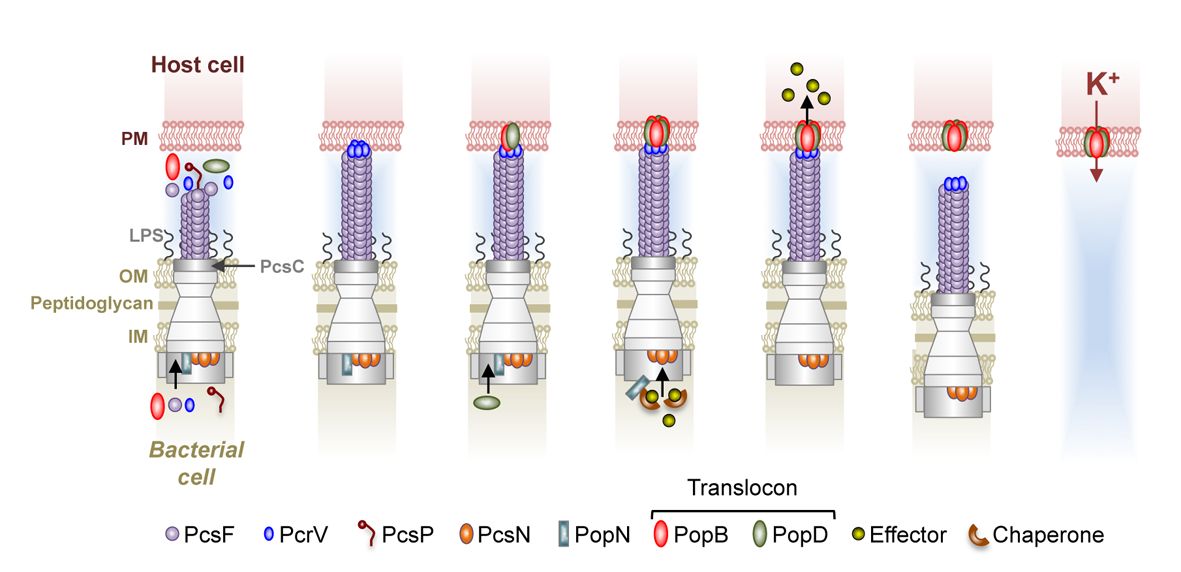Pseudomonas aeruginosa is a bacterium responsible for serious nosocomial infections, particularly in patients with implanted medical devices (catheters, prostheses, etc.) and in people with weakened immune systems. This pathogen all the more concerning since many hospital strains have become multi-resistant to antibiotics.
Its main virulence factor, a system called T3SS, injects toxins into target cells using a molecular syringe. This syringe pierces the membrane of the cell that it infects through a protein duo known as a translocon. "The two proteins PopB and PopD are synthesized in the bacteria, pass through the needle of the syringe and are inserted in the membrane of the cell that will be infected," explains Andréa Dessen, a researcher at the Institut de Biologie Structurale (IBS) of Grenoble. "They form a pore through which the bacterium's toxins reach their target." But that's not all! Indeed, IBS researchers in collaboration with teams from the BIG and the Imperial College of London have shown that the translocon does more than act as a point of entry to the target cell. "Once the translocon is inserted into the cell and the bacteria is removed from its contact site on the same cell, other things still happen," continues Andréa Dessen. "Harmful epigenetic changes take place that affect the cell following an exchange of ions through the pore. This indicates, for the first time, that the translocon is capable of acting not only as a pore, but also as a true virulence factor."
